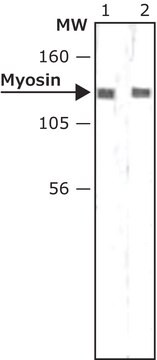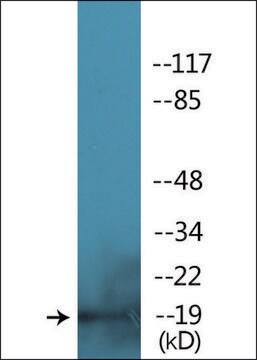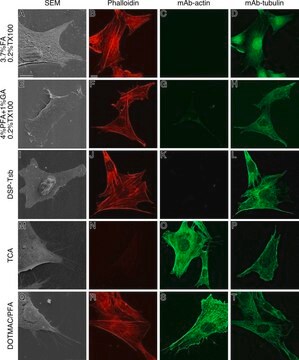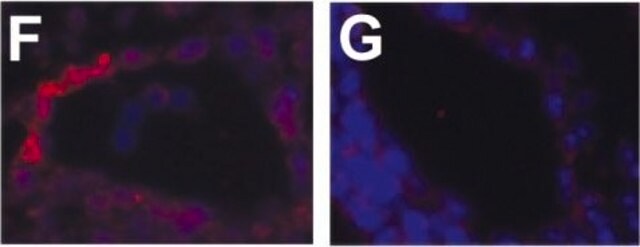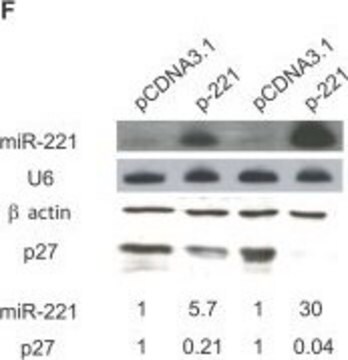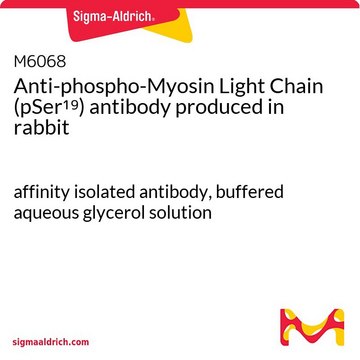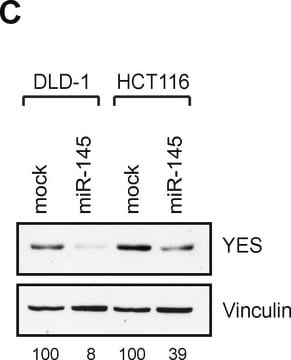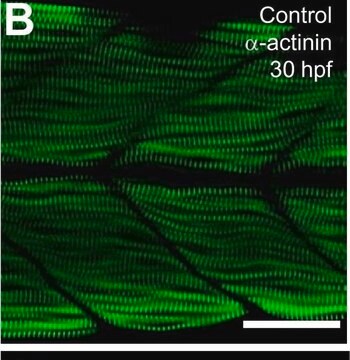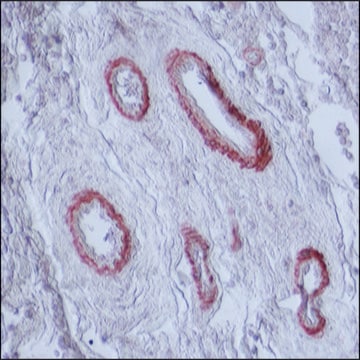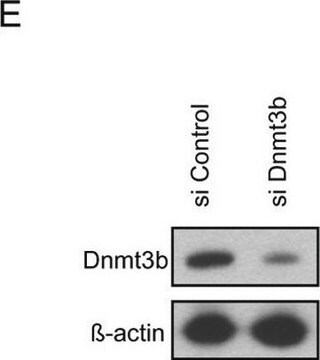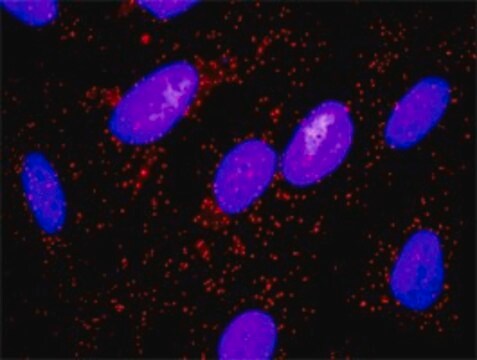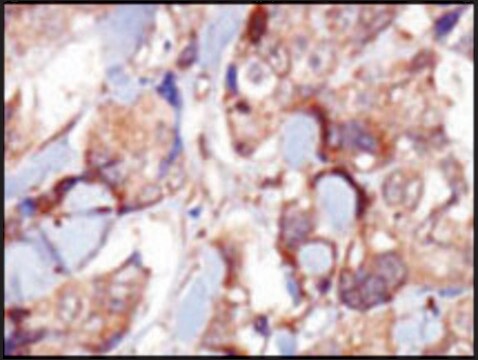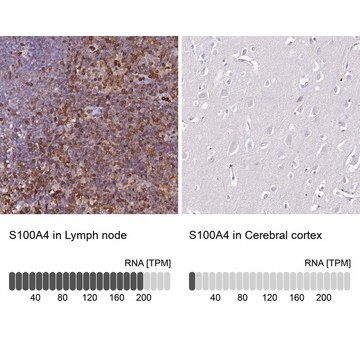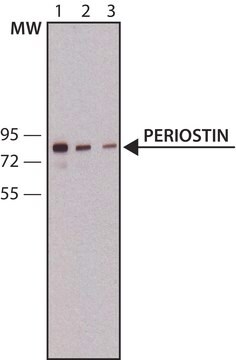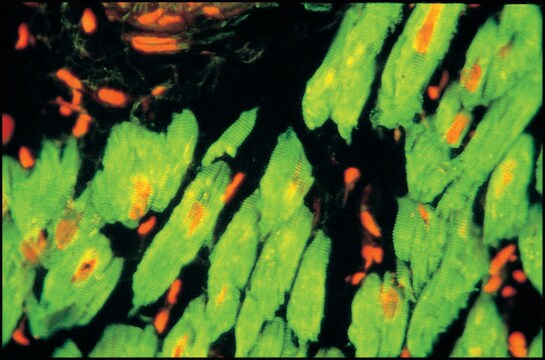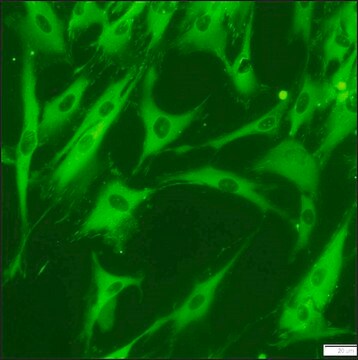M4401
Monoclonal Anti-Myosin (Light Chains 20 kDa) antibody produced in mouse
clone MY-21, ascites fluid
Synonim(y):
Przeciwciało przeciwko łańcuchowi lekkiemu miozyny - monoklonalne przeciwciało przeciwko miozynie (łańcuch lekki 20 kDa) wytwarzane u myszy, Przeciwciało łańcucha lekkiego miozyny
About This Item
Polecane produkty
pochodzenie biologiczne
mouse
Poziom jakości
białko sprzężone
unconjugated
forma przeciwciała
ascites fluid
rodzaj przeciwciała
primary antibodies
klon
MY-21, monoclonal
masa cząsteczkowa
antigen 20 kDa
zawiera
15 mM sodium azide
reaktywność gatunkowa
human, chicken, pig, bovine, rabbit
metody
indirect immunofluorescence: 1:200 using human or chicken fibroblasts
western blot: suitable using denatured and reduced myosin of muscle
izotyp
IgM
numer dostępu UniProt
Warunki transportu
dry ice
temp. przechowywania
−20°C
docelowa modyfikacja potranslacyjna
unmodified
informacje o genach
chicken ... MYLK2(396356)
human ... MYLK2(85366)
Opis ogólny
Specyficzność
Immunogen
Zastosowanie
- western blot analysis
- fluorescence immunohistochemistry
- confocal microscopy
Działania biochem./fizjol.
Postać fizyczna
Przechowywanie i stabilność
Oświadczenie o zrzeczeniu się odpowiedzialności
Nie możesz znaleźć właściwego produktu?
Wypróbuj nasz Narzędzie selektora produktów.
Kod klasy składowania
10 - Combustible liquids
Klasa zagrożenia wodnego (WGK)
nwg
Temperatura zapłonu (°F)
Not applicable
Temperatura zapłonu (°C)
Not applicable
Wybierz jedną z najnowszych wersji:
Masz już ten produkt?
Dokumenty związane z niedawno zakupionymi produktami zostały zamieszczone w Bibliotece dokumentów.
Klienci oglądali również te produkty
Nasz zespół naukowców ma doświadczenie we wszystkich obszarach badań, w tym w naukach przyrodniczych, materiałoznawstwie, syntezie chemicznej, chromatografii, analityce i wielu innych dziedzinach.
Skontaktuj się z zespołem ds. pomocy technicznej